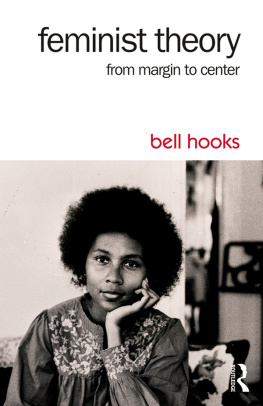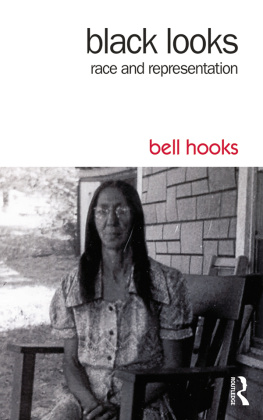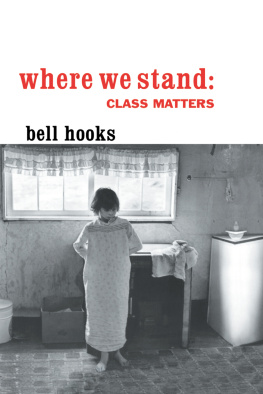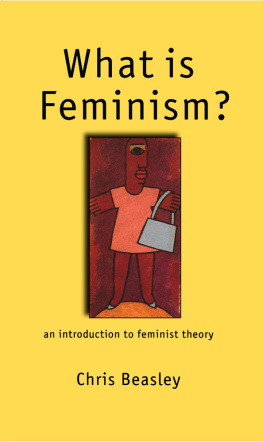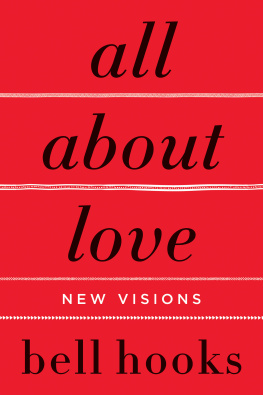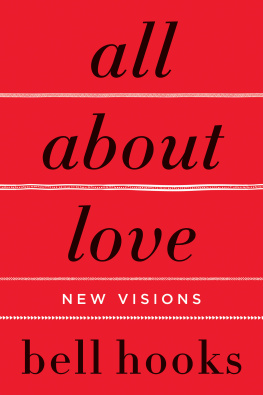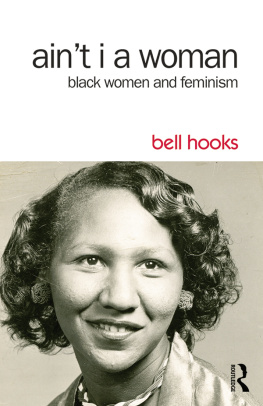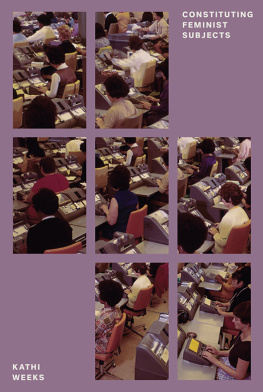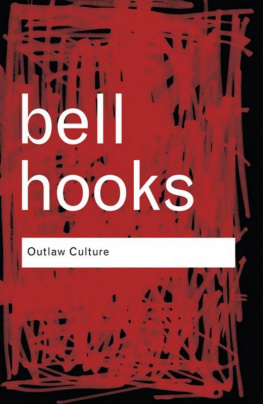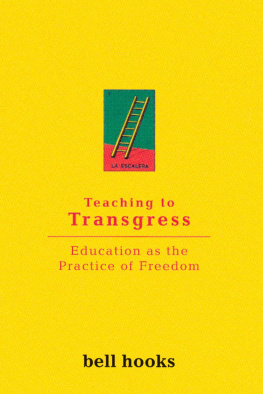hooks - Feminist theory: from margin to center
Here you can read online hooks - Feminist theory: from margin to center full text of the book (entire story) in english for free. Download pdf and epub, get meaning, cover and reviews about this ebook. City: United States, year: 2015, publisher: Taylor and Francis;Routledge, genre: Politics. Description of the work, (preface) as well as reviews are available. Best literature library LitArk.com created for fans of good reading and offers a wide selection of genres:
Romance novel
Science fiction
Adventure
Detective
Science
History
Home and family
Prose
Art
Politics
Computer
Non-fiction
Religion
Business
Children
Humor
Choose a favorite category and find really read worthwhile books. Enjoy immersion in the world of imagination, feel the emotions of the characters or learn something new for yourself, make an fascinating discovery.
Feminist theory: from margin to center: summary, description and annotation
We offer to read an annotation, description, summary or preface (depends on what the author of the book "Feminist theory: from margin to center" wrote himself). If you haven't found the necessary information about the book — write in the comments, we will try to find it.
hooks: author's other books
Who wrote Feminist theory: from margin to center? Find out the surname, the name of the author of the book and a list of all author's works by series.
Feminist theory: from margin to center — read online for free the complete book (whole text) full work
Below is the text of the book, divided by pages. System saving the place of the last page read, allows you to conveniently read the book "Feminist theory: from margin to center" online for free, without having to search again every time where you left off. Put a bookmark, and you can go to the page where you finished reading at any time.
Font size:
Interval:
Bookmark:
Black Women: Shaping Feminist Theory
Feminism in the United States has never emerged from the women who are most victimized by sexist oppression; women who are daily beaten down, mentally, physically, and spirituallywomen who are powerless to change their condition in life. They are a silent majority. A mark of their victimization is that they accept their lot in life without visible question, without organized protest, without collective anger or rage. Betty Friedans The Feminine Mystiquell still heralded as having paved the way for contemporary feminist movementit was written as if these women did not exist. (Although The Feminine Mystique has been criticized and even attacked from various fronts, I call attention to it again because certain biased premises about the nature of womens social status put forth initially in this text continue to shape the tenor and direction of feminist movement.)
Friedans famous phrase, the problem that has no name, often quoted to describe the condition of women in this society, actually referred to the plight of a select group of college-educated, middle- and upper-class, married white womenhousewives bored with leisure, with the home, with children, with buying products, who wanted more out of life. Friedan concludes her first chapter by stating: We can no longer ignore that voice within women that says: I want something more than my husband and my children and my house. That more she defined as careers. She did not discuss who would be called in to take care of the children and maintain the home if more women like herself were freed from their house labor and given equal access with white men to the professions. She did not speak of the needs of women without men, without children, without homes. She ignored the existence of all non-white women and poor white women. She did not tell readers whether it was more fulfilling to be a maid, a babysitter, a factory worker, a clerk, or a prosdtute than to be a leisure-class housewife.
She made her plight and the plight of white women like herself synonymous with a condition affecting all American women. In so doing, she deflected attention away from her classism, her racism, her sexist attitudes towards the masses of American women. In the context of her book, Friedan makes clear that the women she saw as victimized by sexism were college-educated white women who were compelled by sexist conditioning to remain in the home. She contends:
It is urgent to understand how the very condition of being a housewife can create a sense of emptiness, non-existence, nothingness in women. There are aspects of the housewife role that make it almost impossible for a woman of adult intelligence to retain a sense of human identity, the firm core of self or I without which a human being, man or woman, is not truly alive. For women of ability in America today, I am convinced that there is something about the housewife state itself that is dangerous.
Specific problems and dilemmas of leisure-class white housewives were real concerns that merited consideration and change, but they were not the pressing political concerns of masses of women. Masses of women were concerned about economic survival, ethnic and racial discrimination, etc. When Friedan wrote The Feminine Mystique, more than one-third of all women were in the work force. Although many women longed to be housewives, only women with leisure time and money could actually shape their identities on the model of the feminine mystique. They were women who, in Friedans words, were told by the most advanced thinkers of our time to go back and live their lives as if they were Noras, restricted to the dolls house by Victorian prejudices.
From her early writing, it appears that Friedan never wondered whether or not the plight of college-educated white housewives was an adequate reference point by which to gauge the impact of sexism or sexist oppression on the lives of women in American society. Nor did she move beyond her own life experience to acquire an expanded perspective on the lives of women in the United States. I say this not to discredit her work. It remains a useful discussion of the impact of sexist discrimination on a select group of women. Examined from a different perspective, it can also be seen as a case study of narcissism, insensitivity, sentimentality, and self-indulgence, which reaches its peak when Friedan, in a chapter titled Progressive Dehumanization, makes a comparison between the psychological effects of isolation on white housewives and the impact of confinement on the self-concept of prisoners in Nazi concentration camps.
Friedan was a principal shaper of contemporary feminist thought. Significantly, the one-dimensional perspective on womens reality presented in her book became a marked feature of the contemporary feminist movement. Like Friedan before them, white women who dominate feminist discourse today rarely question whether or not their perspective on womens reality is true to the lived experiences of women as a collective group. Nor are they aware of the extent to which their perspectives reflect race and class biases, although there has been a greater awareness of biases in recent years. Racism abounds in the writings of white feminists, reinforcing white supremacy and negating the possibility that women will bond politically across ethnic and racial boundaries. Past feminist refusal to draw attention to and attack racial hierarchies suppressed the link between race and class. Yet class structure in American society has been shaped by the racial politic of white supremacy; it is only by analyzing racism and its function in capitalist society that a thorough understanding of class relationships can emerge. Class struggle is inextricably bound to the struggle to end racism. Urging women to explore the full implication of class in an early essay, The Last Straw, Rita Mae Brown explained:
Class is much more than Marxs definition of relationship to the means of production. Class involves your behavior, your basic assumptions about life. Your experience (determined by your class) validates those assumptions, how you are taught to behave, what you expect from yourself and from others, your concept of a future, how you understand problems and solve them, how you think, feel, act. It is these behavioral patterns that middle-class women resist recognizing although they may be perfectly willing to accept class in Marxist terms, a neat trick that helps them avoid really dealing with class behavior and changing that behavior in themselves. It is these behavioral patterns which must be recognized, understood, and changed.
White women who dominate feminist discourse, who for the most part make and articulate feminist theory, have little or no understanding of white supremacy as a racial politic, of the psychological impact of class, of their political status within a racist, sexist, capitalist state.
It is this lack of awareness that, for example, leads Leah Fritz to write in Dreamers and Dealers, a discussion of the current womens movement published in 1979:
Womens suffering under sexist tyranny is a common bond among all women, transcending the particulars of the different forms that tyranny takes. Suffering cannot be measured and compared quantitatively. Is the enforced idleness and vacuity of a rich woman, which leads her to madness and/or suicide, greater or less than the suffering of a poor woman who barely survives on welfare but retains somehow her spirit? There is no way to measure such difference, but should these two women survey each other without the screen of patriarchal class, they may find a commonality in the fact that they are both oppressed, both miserable.
Fritzs statement is another example of wishful thinking, as well as the conscious mystification of social divisions between women that has characterized much feminist expression. While it is evident that many women suffer from sexist tyranny, there is little indication that this forges a common bond among all women. There is much evidence substantiating the reality that race and class identity creates differences in quality of life, social status, and lifestyle that take precedence over the common experience women sharedifferences that are rarely transcended. The motives of materially privileged, educated white women with a variety of career and lifestyle options available to them must be questioned when they insist that suffering cannot be measured. Fritz is by no means the first white feminist to make this statement. It is a statement that I have never heard a poor woman of any race make. Although there is much I would take issue with in Benjamin Barbers critique of the womens movement, Uberating Feminism, I agree with his assertion:
Font size:
Interval:
Bookmark:
Similar books «Feminist theory: from margin to center»
Look at similar books to Feminist theory: from margin to center. We have selected literature similar in name and meaning in the hope of providing readers with more options to find new, interesting, not yet read works.
Discussion, reviews of the book Feminist theory: from margin to center and just readers' own opinions. Leave your comments, write what you think about the work, its meaning or the main characters. Specify what exactly you liked and what you didn't like, and why you think so.

